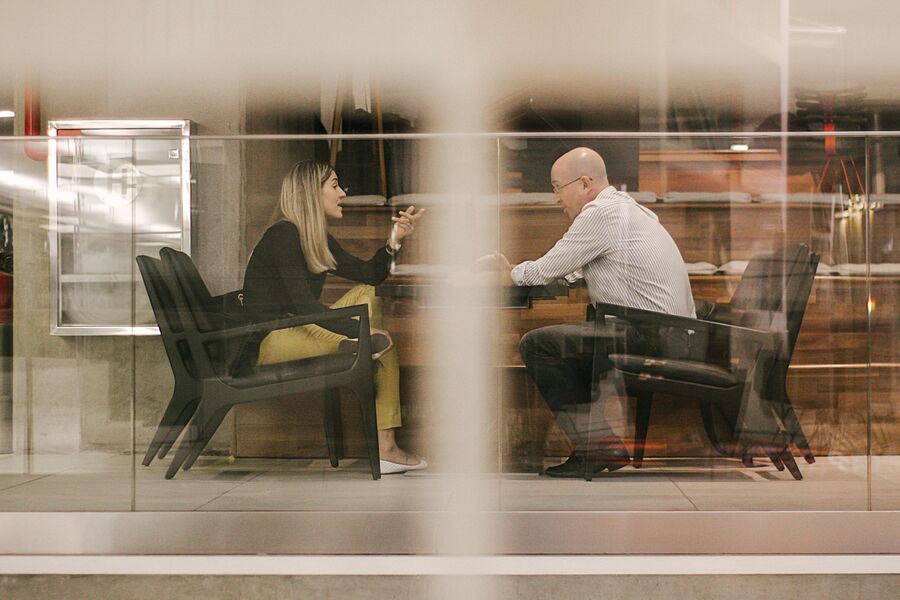24 October 20222 min read
Hospitality in the workplace
Ghizlane El Mir

Four considerations for hospitality-imbued workplaces
Many aspects of our lives have been forever changed after the eventful couple of years we had as individuals and as a society and workplace dynamics and interpretations of hospitality are no exception.
Pre-covid, hospitality in the workplace consisted of a nice coffee machine in the reception or kitchen area, but that is now evolving to a broader and more purposeful approach of creating experiences for employees, clients, suppliers, and any guest that converses with an organisation — hospitality is now how a company brand and culture manifest in the workplace.
As most of us step back into the office, many progressive firms are stepping away from traditional work environments to examine workplace amenities and design solutions and are rethinking their spaces with hospitality in mind. Blurring the lines between business and leisure — something we got so accustomed to, companies are evaluating spaces such as coffee houses, roof bars, luxury hotel-style workout facilities, modern coworking-style spaces, yoga centres, and more.
When embarking on this unconventional approach, it’s a good idea to consider these four opportunities...

1. Revisiting brand values
Before any design work is carried out, it’s important to ponder what matters to your organisation and how that will be reflected in your hospitality experience. Is sustainability at the forefront of what you do? Does social media play a big part? How are employees’ achievements celebrated day to day? and so on. Taking the time to carefully draw a vision and plan your spaces with a hospitality designer will make your spaces work harder and enable employees to tell the stories of your organisation, its brand, and values.

2. A first impression
“You never have a second chance to make a first impression”, so crafting the organization’s desired hospitality experience starts from the moment employees, clients and guests arrive at the workplace.
The entrance should evoke a positive feeling and depict a warm welcome while addressing any challenges and reflecting the company’s willingness to work alongside clients. Many elements play a part — clever use of space, choice of materials, finishes, furniture placement and lighting…
Many progressive firms are stepping away from traditional work environments to examine workplace amenities and design solutions and rethinking their spaces with hospitality in mind.

3. Social spaces
As we all re-learn the art of socialising, having social spaces in the workplace can provide a place to connect with fellow colleagues, get inspired by what they have been up to over the weekend, and chat about the upcoming deliverable or deadline on that big project. All these activities help employees develop a community at work and foster a culture that reflects an organisation’s brand and provide a destination where collaborative work is nurtured.

4. Personal space
Ever stepped into an open-plan workspace with beautifully designed social spaces and noticed everyone wearing a big headset serving as a noise-cancelling item rather than a communication tool? The answer is most likely yes! Workplace hospitality arrangements shouldn’t overlook employees’ needs to focus and accomplish their work, both in groups and alone.
The dynamic nature of today’s work requires employees to undertake a plethora of tasks within a workday. Individual workstations are limited in functionality, so providing employees with different workspace choices can enable them to choose what suits them and their needs and create a more spontaneous hospitable experience influenced by the employer’s culture.
Hospitality is many things. These four considerations are only a starting point for companies looking to achieve a hospitality experience.


